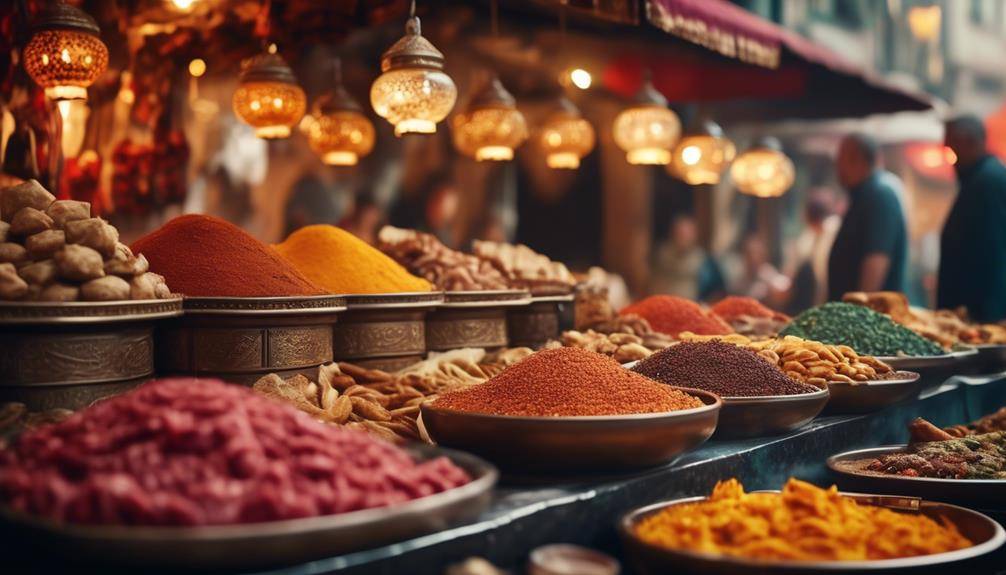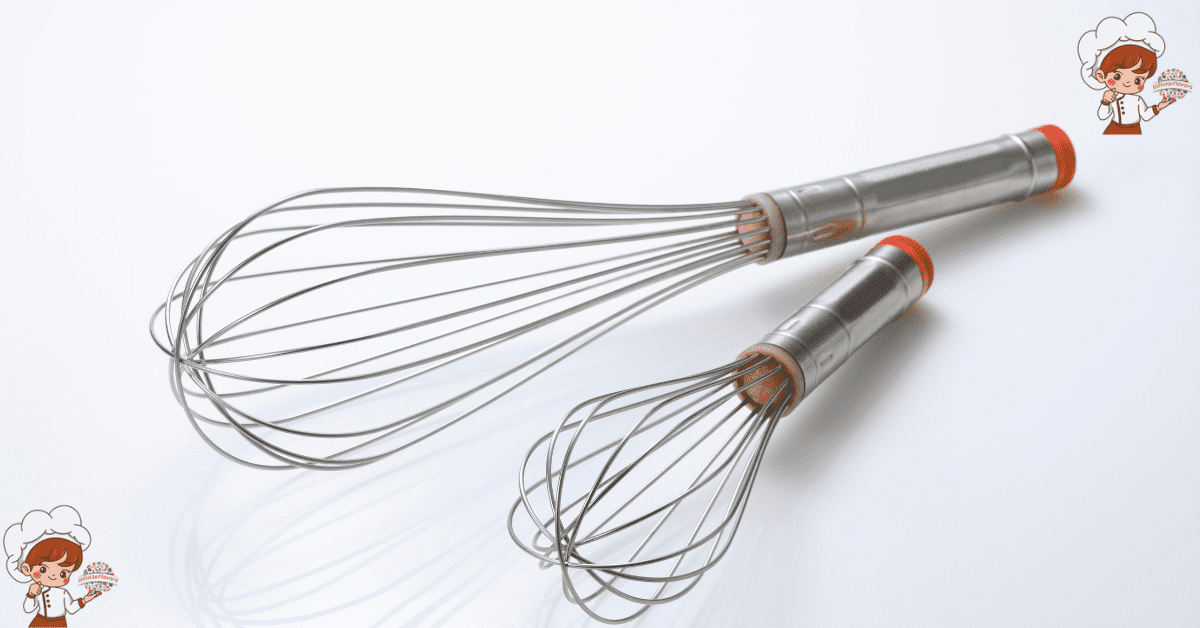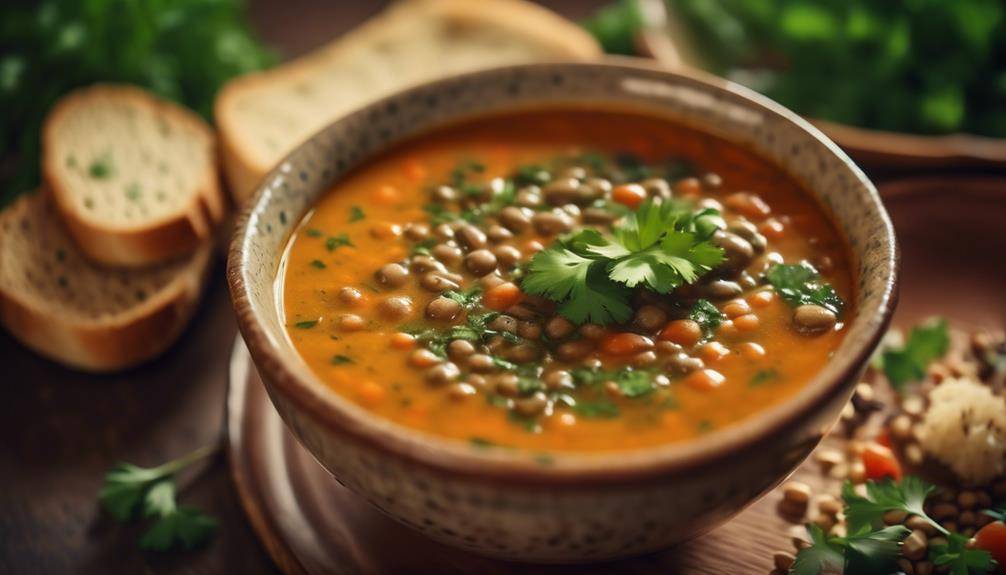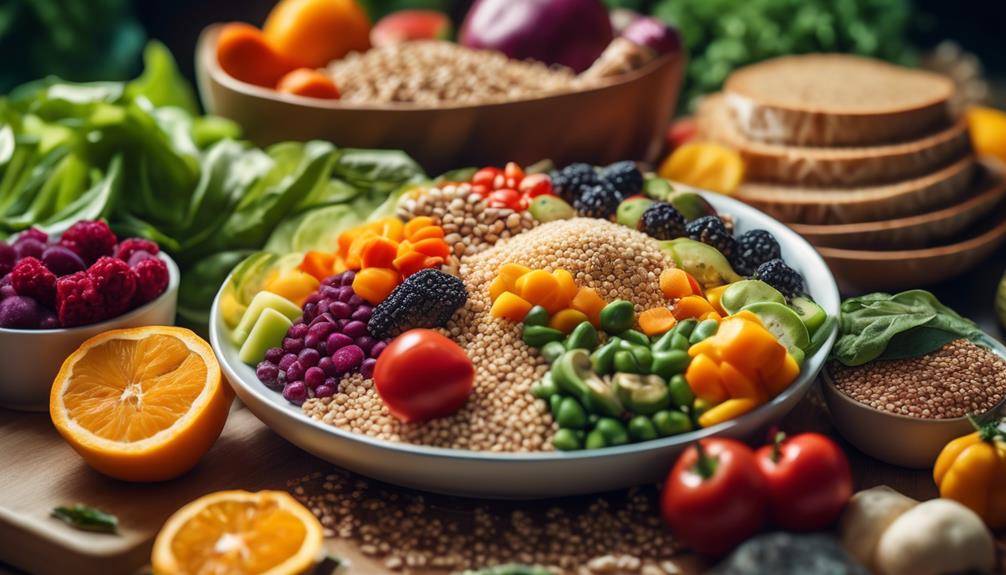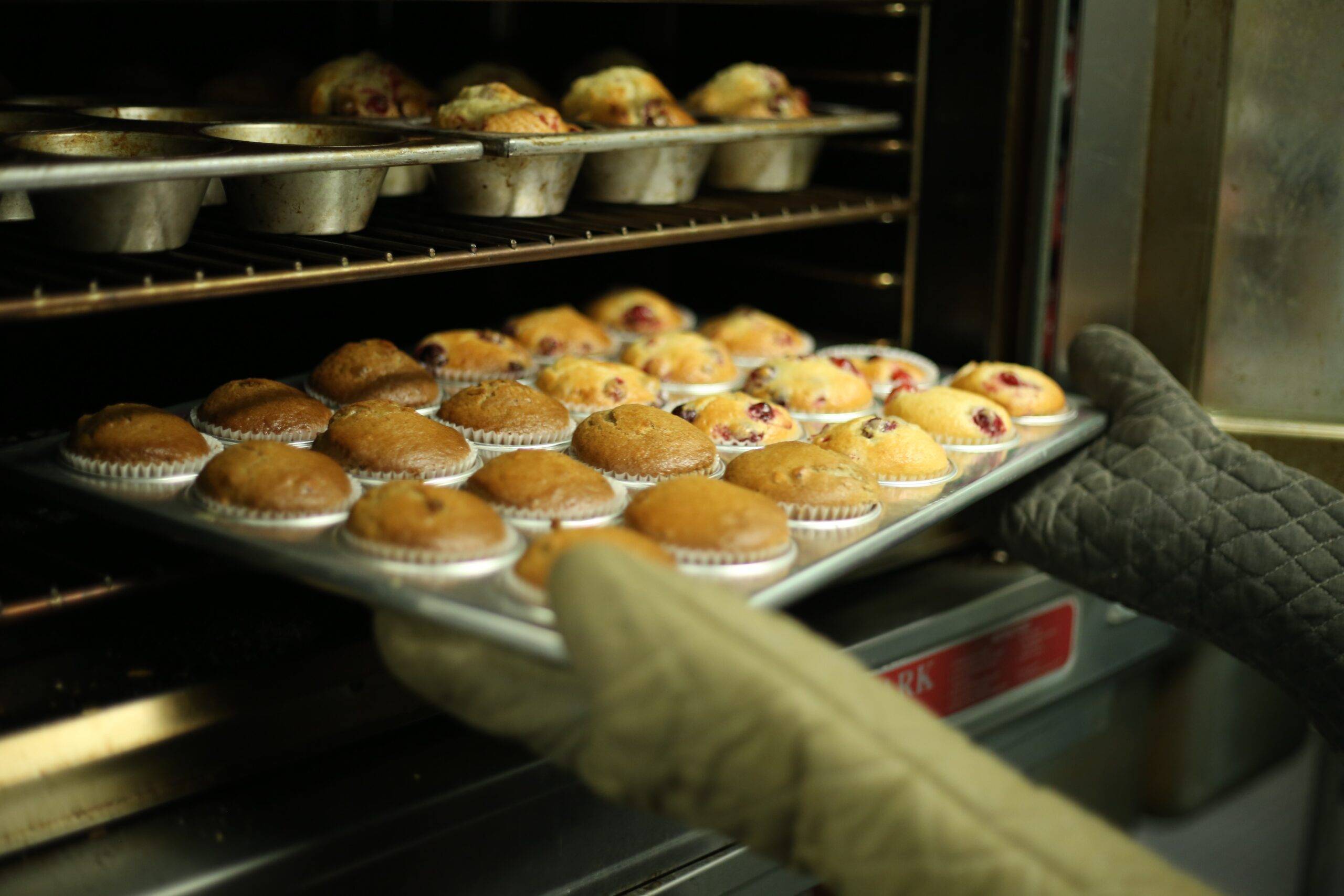The Best Chef Knives Under 100
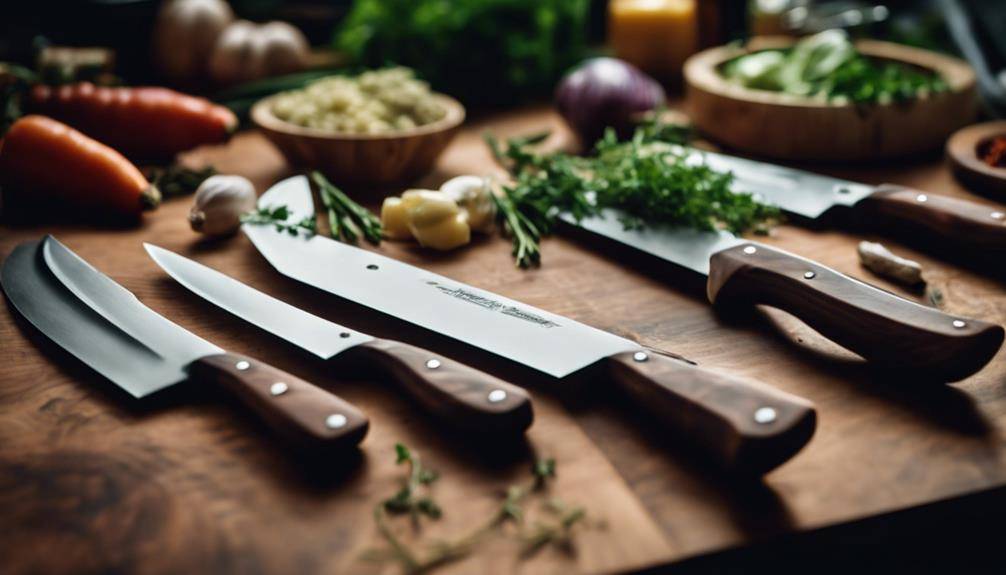
You can find The Best Chef Knives Under 100 that offer great quality and performance. Look for high-carbon stainless steel blades for durability and sharpness. Brands like Victorinox and Mercer Culinary provide reliable options that won’t break the bank. Pay attention to the handle comfort; ergonomic designs enhance grip and reduce fatigue. Whether you prefer a traditional Western knife or a Japanese Santoku, there’s something for every style. Ensuring you choose a well-balanced knife will help with control and precision in the kitchen. Stick around to uncover more tips on selecting the perfect knife for your culinary adventures.
Importance of a Good Chef Knife
A good chef knife is essential for any kitchen, as it can make meal prep quicker and more enjoyable. When you invest in a quality chef knife, you’ll immediately notice the benefits it brings to your culinary experience. You’ll find that chopping vegetables, slicing meats, and dicing herbs become effortless tasks. This efficiency not only saves time but also allows you to focus on the joy of cooking rather than struggling with dull or inadequate knives.
One of the key chef knife benefits is its versatility. Whether you’re preparing a simple weeknight dinner or an elaborate feast, a chef knife can handle a wide range of tasks. You’ll be able to slice, julienne, and mince with ease, making it your go-to tool for all your cooking needs. Plus, a well-balanced knife feels comfortable in your hand, which enhances your control and precision in every cut.
Having a good chef knife also elevates your confidence in the kitchen. You’ll feel empowered to experiment with new recipes and techniques, knowing you have the right tool. This newfound confidence can transform your culinary experience, turning an ordinary meal into a culinary masterpiece. So, as you contemplate your next cooking adventure, remember that a good chef knife is more than just a tool—it’s an investment in your kitchen skills and enjoyment. With the right knife, you can truly release your inner chef.
Key Features to Look For
When shopping for a chef knife under $100, you’ll want to focus on a few key features. First, consider the blade material quality, as it impacts performance and durability. Next, make certain the handle offers comfort and a solid grip, so you can work with confidence and ease.
Blade Material Quality
Choosing the right blade material is essential for ensuring your chef knife delivers both durability and performance in the kitchen. You’ll want to evaluate blade hardness, as it plays a significant role in how well the knife retains its edge. A harder blade usually means less frequent sharpening, allowing you to slice through ingredients with ease. Look for knives made from high-carbon stainless steel, which balances hardness and flexibility.
Corrosion resistance is another important factor. Since you’ll be working with various foods, it’s crucial that your knife withstands moisture and acidic ingredients without rusting. A good-quality stainless steel blade often provides excellent corrosion resistance, ensuring your knife remains in prime condition over time.
Pay attention to the manufacturer’s specifications; many will list the Rockwell hardness scale rating, which indicates the blade’s toughness. Generally, a rating of 58-62 is ideal for a chef knife. By carefully selecting a knife with ideal blade hardness and corrosion resistance, you’ll be well-equipped to tackle any culinary task with confidence, making your time in the kitchen more enjoyable and efficient.
Handle Comfort and Grip
Finding a chef knife with a comfortable handle is vital for guaranteeing you can work efficiently and safely in the kitchen. When choosing your knife, pay close attention to the handle’s ergonomic design. A well-designed handle reduces strain on your hand and wrist, allowing you to chop, slice, and dice for longer periods without discomfort. Look for grips that fit naturally in your hand, providing stability and control.
Material durability also plays an important role in handle comfort. Opt for handles made from high-quality materials like Pakkawood or thermoplastic elastomer (TPE). These materials not only offer a secure grip but also withstand the rigors of daily use. Avoid handles that feel too slick, as they can lead to accidents when your hands are wet or greasy.
Test the knife in-store if possible. Hold it, feel its weight, and verify it fits your grip correctly. Remember, a comfortable handle doesn’t just make cooking enjoyable; it keeps you safe from slips and injuries. By prioritizing ergonomic design and material durability, you’ll find a chef knife that feels like an extension of your hand in the kitchen.
Top Brands Under $100
When you’re searching for a quality chef knife under $100, the brand can make a big difference in performance and durability. You’ll want to take into account popular knife brands that offer key features at this price point. Let’s explore some best sellers and what sets them apart.
Popular Knife Brands
Several knife brands offer exceptional quality and performance without breaking the bank, making them ideal options for budget-conscious chefs. Brands like Victorinox and Mercer Culinary have built a solid reputation through years of consistent quality and affordability. Their knives not only perform well but also boast knife aesthetics that appeal to both novice and seasoned cooks.
Another strong contender is Wüsthof’s Classic line, where you can find some models under $100, providing a taste of high-end craftsmanship at a lower price. This brand’s reputation for durability and sharpness is well-known, making it a reliable choice for everyday use.
If you’re looking for something slightly more modern, consider the Global brand. Their lightweight, sleek designs and eye-catching aesthetics make them popular among chefs who appreciate style just as much as functionality.
Lastly, Shun’s Sora line offers a blend of traditional Japanese craftsmanship and contemporary design, ensuring you don’t have to sacrifice style for performance. With these popular brands, you’ll find quality knives that enhance your cooking experience without straining your wallet.
Key Features to Consider
Choosing the right chef knife under $100 involves considering key features like blade material, handle comfort, and overall weight to guarantee it meets your cooking needs. First, focus on blade material; high-carbon stainless steel is a popular choice for its durability and excellent edge retention. This means your knife will stay sharp longer, cutting down on maintenance time.
Next, think about handle comfort. A well-designed handle that fits your grip can make a big difference in your cooking experience. Look for materials like wood or synthetic composites that provide a secure hold, allowing you to chop and slice with ease.
Another significant factor is knife balance. A well-balanced knife feels comfortable in your hand, reducing fatigue during extended use. It’s vital to test the knife’s balance by holding it; it should feel stable and controlled without excessive effort.
Best Sellers Overview
Which brands offer the best chef knives under $100? When it comes to finding the best sellers, you’ve got a few standout names that cater to user preferences without breaking the bank. Brands like Victorinox and Mercer Culinary consistently rank high, thanks to their reliable performance and ergonomic designs.
Victorinox, known for its Swiss Army knives, delivers high-quality, versatile chef knives that are perfect for both beginners and experienced cooks. Their Fibrox line is particularly popular for its non-slip grip and excellent balance.
Mercer Culinary also shines in the under $100 category. Their knives boast high-carbon stainless steel blades, making them durable and easy to maintain. Many users appreciate the comfortable handles and overall sharpness straight out of the box.
Another brand worth considering is J.A. Henckels, which offers solid options like the Classic line that balances functionality with elegance.
Whether you’re prepping veggies or carving meats, these brands have something to meet your needs. So when you’re shopping, keep these best sellers in mind—they’ll help you elevate your culinary skills without overspending.
Santoku Knives Overview
Exploring the unique design and versatility of Santoku knives reveals why they’re a favorite among both home cooks and professional chefs. Originating in Japan, the Santoku knife dates back to the mid-20th century, reflecting a blend of traditional craftsmanship and modern cooking needs. This knife is characterized by its shorter, wider blade compared to Western-style chef’s knives. Its name, meaning “three virtues,” refers to its ability to excel at slicing, dicing, and mincing.
When you use a Santoku knife, you’ll appreciate its precision and comfort. The flat edge allows for a straight cut, making it ideal for chopping vegetables and herbs with ease. One of the key santoku knife techniques involves using a gentle rocking motion, which maximizes its effectiveness and reduces fatigue during prolonged use. This technique can enhance your efficiency in the kitchen, especially when prepping meals.
Another notable feature is the granton edge, which consists of small dimples along the blade. These help prevent food from sticking, giving you cleaner cuts and a more enjoyable cooking experience. Whether you’re dicing onions or slicing fish, mastering the Santoku knife techniques will elevate your culinary skills.
With its rich santoku knife history and multifunctional design, it’s no wonder this knife is a must-have for any chef looking to enhance their kitchen arsenal—all without breaking the bank!
Traditional Western Knives
Traditional Western knives, known for their robust design and versatility, are essential tools in any kitchen that prioritize durability and performance. These knives embody traditional knife styles that have stood the test of time, making them favorites among both professional chefs and home cooks alike. When you choose a Western knife, you’re opting for a tool that excels in a variety of tasks, from chopping and slicing to dicing and mincing.
The craftsmanship behind these knives is notable. They often feature a full tang, which means the blade extends through the handle, offering better balance and control. High-carbon stainless steel is commonly used, ensuring that your knife remains sharp and resistant to rust. You’ll appreciate how these materials contribute to the longevity and effectiveness of your cutting tools.
Popular traditional Western knife styles include the classic chef’s knife, paring knife, and bread knife. Each serves a specific purpose, allowing you to tackle any culinary challenge. For instance, the chef’s knife is your go-to for a wide range of tasks, while the paring knife excels at intricate work like peeling and trimming.
With a budget under $100, you can find high-quality options that don’t compromise on performance. Investing in a traditional Western knife not only enhances your cooking experience but also connects you to the rich history of knife craftsmanship. So, whether you’re dicing vegetables or slicing meat, a Western knife is a reliable companion in your culinary adventures.
Ceramic Chef Knives
When it comes to choosing a ceramic chef knife, you’ll find several advantages that set them apart from traditional options. They’re lightweight, stay sharp longer, and offer a unique aesthetic appeal. However, you’ll also need to pay attention to proper maintenance and care to keep them in top shape.
Benefits of Ceramic Knives
Enjoying the benefits of ceramic knives means experiencing their exceptional sharpness and lightweight design, which can make food preparation quicker and more efficient. Unlike traditional steel knives, ceramic knives stay sharper for longer, allowing you to slice through fruits, vegetables, and meats with impressive slicing precision. You won’t need to worry about frequent sharpening, making them a convenient choice for busy kitchens.
Ceramic durability is another standout feature. These knives resist wear and tear, so they maintain their performance even after extensive use. Plus, they won’t rust or corrode, which is a significant advantage over metal options. The non-reactive nature of ceramic also means your food won’t pick up any metallic flavors, preserving the taste of your ingredients.
Their lightweight design reduces hand fatigue, especially during long cooking sessions, allowing you to maintain control and accuracy with ease. With vibrant colors and sleek aesthetics, ceramic knives can also add a modern touch to your kitchen. Overall, whether you’re a home cook or a culinary enthusiast, ceramic knives offer a blend of practicality and style that can enhance your cooking experience.
Maintenance and Care Tips
To keep your ceramic chef knives in top condition, it’s essential to follow proper maintenance and care practices. First, always hand wash your knives instead of putting them in the dishwasher. The harsh detergents and high temperatures can damage the ceramic. Use a mild soap and a soft sponge to clean the blade, ensuring you dry it immediately to prevent any moisture buildup.
For blade polishing, consider using a specialized ceramic knife sharpener. These sharpeners are designed to maintain the fine edge of your knife without causing damage. Regularly checking the sharpness will help keep your cuts precise.
When it comes to storage solutions, opt for a knife block or a magnetic strip. Avoid tossing your ceramic knives into a drawer with other utensils, as they can chip or break. A protective sheath can also be a practical option if you need to store them in a drawer.
Lastly, always handle your ceramic knives with care. They’re lightweight and precise, but dropping them can lead to fractures. With the right maintenance, your ceramic chef knives will serve you well for years to come.
Forged Vs. Stamped Knives
Understanding the differences between forged and stamped knives can greatly influence your choice in the kitchen. When you’re making a decision, you’ll want to evaluate the unique qualities each type offers.
Forged knives are crafted from a single piece of steel, which is heated and then shaped into the desired blade. This process gives them several forged advantages. They tend to be more durable and maintain their sharpness longer than their stamped counterparts. The added weight from the thicker blade can provide better balance, allowing for more precise cuts. If you enjoy a classic, traditional feel in your kitchen tools, a forged knife might be the right choice for you.
On the other hand, stamped knives are made from a flat piece of steel that’s stamped out into shape. They’re generally lighter and more agile, offering stamped benefits like easier maneuverability and a lower price point. This makes them a great option for those who are just starting out or who want a reliable daily-use knife without breaking the bank. Stamped knives often feature a more modern design and are easier to handle for extended periods, which can help if you do a lot of chopping or slicing.
Ultimately, the choice between forged and stamped knives boils down to personal preference and the specific needs of your cooking style. By weighing the forged advantages against the stamped benefits, you’ll find the perfect knife to enhance your culinary experience.
Best Budget Chef Knives
Finding the best budget chef knives under $100 can make a significant difference in your cooking experience without straining your wallet. When you’re on the lookout for a quality knife, focus on features that enhance both performance and comfort.
One of the first things to take into account is the best knife materials. Stainless steel blades are often a great choice because they offer a good balance of durability and sharpness. Look for high-carbon stainless steel, which provides excellent edge retention and resistance to rust and staining. Some budget knives may also feature ceramic blades, which are lightweight and maintain sharpness for a long time, although they can be more brittle.
Another vital aspect is the ergonomic handle design. A comfortable grip can greatly affect your slicing and chopping efficiency. Look for knives with handles made from materials like polymer or wood that provide a secure and comfortable hold. An ergonomic handle will reduce hand fatigue during extended use, allowing you to tackle any recipe with ease.
You don’t have to sacrifice quality for affordability. Several brands offer reputable chef knives that combine the best knife materials with ergonomic handle designs, giving you the performance you need without going over budget. By investing in a well-designed knife, you’ll elevate your cooking skills and enjoy the process even more. Remember, a good chef knife can be a game-changer in your kitchen, so choose wisely!
User Reviews and Ratings
User reviews and ratings can provide invaluable insights into the performance and durability of chef knives under $100. When you read through user experiences, you’ll find information that goes beyond what the manufacturer claims. Real users share their stories, detailing how the knives hold up over time, whether they maintain their sharpness, and how comfortable they are during extended use.
As you sift through ratings, pay attention to common themes in the reviews. If multiple users mention that a particular knife excels at chopping vegetables or slicing meat with ease, it’s likely a solid choice. Look for comments about knife performance in various tasks, like dicing onions or filleting fish. These insights can help you assess whether a knife will meet your specific needs in the kitchen.
Additionally, don’t overlook the criticisms. If several users mention issues with the handle slipping or the blade chipping, take those warnings seriously. It’s crucial to evaluate both positive and negative reviews to get a balanced view.
Some knives may boast high ratings, but if user experiences suggest they’re prone to dulling quickly, you might want to keep searching. Ultimately, user reviews equip you with the knowledge to make an informed decision, ensuring you choose a chef knife that truly delivers on performance without breaking the bank. By leveraging the collective wisdom of fellow cooks, you can confidently select the best chef knife for your culinary adventures.
Maintenance and Care Tips
To keep your chef knife in top shape, regular maintenance is key. You’ll want to focus on sharpening techniques, proper cleaning methods, and safe storage practices. These steps will guarantee your knife performs well and lasts for years.
Regular Sharpening Techniques
Regularly sharpening your chef knife is crucial for maintaining its performance and guaranteeing safe, precise cuts in the kitchen. You can use various sharpening methods to keep your knife in prime shape. A whetstone is a popular choice; it allows you to control the angle and pressure, producing a sharp edge. Start by soaking the stone in water, then use a 20-degree angle to sharpen each side of the blade.
Honing techniques are also essential for upkeep. A honing rod, often overlooked, realigns the blade’s edge without removing much material. Glide the knife along the rod at a 15-20 degree angle, alternating sides. This process should be done regularly, even between sharpenings, to maintain your knife’s sharpness.
For best results, aim to sharpen your knife every few months, or sooner if you use it heavily. Remember, a sharp knife isn’t just about performance; it’s safer, too. Dull knives can slip and cause accidents. By incorporating these sharpening methods and honing techniques into your routine, you’ll guarantee your chef knife remains a reliable tool in your culinary adventures.
Proper Cleaning Methods
Maintaining your chef knife’s sharpness is only part of the equation; proper cleaning methods are equally important for its longevity and performance. To guarantee your knife stays in top condition, adopt effective cleaning techniques immediately after use. Rinse the blade under warm water to remove food particles, but avoid soaking it. Soaking can lead to rust and damage the handle.
Use a mild dish soap and a sponge or soft cloth to gently clean the blade. Never use abrasive materials, as they can scratch the surface and compromise knife hygiene. After washing, dry the knife thoroughly with a clean, dry cloth to prevent moisture buildup.
It’s also wise to clean the knife after cutting acidic foods, like tomatoes or citrus, as these substances can corrode the blade over time. If your knife has a wooden handle, be sure to treat it with food-safe mineral oil occasionally to maintain its integrity. Remember, consistent cleaning not only preserves the knife’s performance but also guarantees safe food preparation. By following these simple yet effective cleaning methods, you can extend the life of your chef knife and keep it performing at its best.
Safe Storage Practices
Proper storage of your chef knife is essential for guaranteeing its sharpness and longevity. You have a couple of great options to take into account: magnetic strips and knife blocks. Both methods keep your knives secure and accessible while protecting their blades.
If you opt for a magnetic strip, mount it on a wall or inside a cabinet. This method not only saves counter space but also showcases your knives. Just make certain the strip is strong enough to hold the weight of your knives. When placing your knife on the strip, do so gently to avoid damaging the blade.
On the other hand, knife blocks are a classic choice. They come in various styles, from wooden to acrylic, and provide a stable environment for your knives. Verify that each knife fits snugly into its slot, as loose storage can lead to dulling or chipping.
Regardless of the storage method you choose, always keep your knives away from moisture and direct sunlight. With proper storage practices, you can maintain your chef knife in top condition for years to come.
Knife Sets Vs. Individual Knives
When deciding between knife sets and individual knives, you should consider your cooking style and needs. Knife sets often come with a variety of blades designed for different tasks, which can be convenient if you’re looking to equip your kitchen all at once. If you’re just starting out or want an all-encompassing solution, a set might be the way to go. It usually offers a good mix of essential knives, like a chef’s knife, paring knife, and serrated knife, all in one purchase.
On the other hand, individual knives give you the flexibility to choose exactly what you need. If you already have some knives or prefer to invest in specific pieces, buying individual knives allows you to focus on quality over quantity. You can select high-performance knives that suit your specific cooking methods, ensuring you get the best tools for your culinary creations.
Additionally, individual knives can often be more cost-effective in the long run. Instead of spending money on a set that includes knives you may never use, you can build your collection piece by piece. This way, you can prioritize your budget for a high-quality chef’s knife, for example, while gradually adding other knives as you find your cooking style evolves.
Ultimately, whether you choose knife sets or individual knives will depend on your kitchen habits and budget. Assess your cooking needs carefully to make the best choice for you.
Where to Buy
Whether you opt for a knife set or individual knives, knowing where to buy can considerably impact your choices and budget. When it comes to purchasing chef knives under $100, you’ve got two primary avenues to explore: online retailers and local stores.
Shopping at online retailers offers convenience and often a broader selection. Websites like Amazon, Walmart, and specialty kitchenware sites frequently have user reviews, so you can gauge the quality and performance of the knives before making a decision. Plus, you can easily compare prices across different brands to find the best deal. Just keep an eye out for shipping costs, as they can sometimes eat into your savings.
On the other hand, local stores allow you to physically inspect the knives before buying. This hands-on experience can be invaluable; you’ll get a feel for the knife’s weight, balance, and grip. Stores like Bed Bath & Beyond, Williams Sonoma, and even local kitchen supply shops may have knowledgeable staff who can provide recommendations based on your cooking style.
Ultimately, your choice may depend on your personal preferences. If you prefer the immediacy of taking your new knife home right away, local stores are your best bet. However, if you’re seeking variety and potentially better prices, online retailers might be the way to go. Either way, doing your research will guarantee you make an informed purchase.
Performance Comparison
To truly understand how well chef knives under $100 perform, you should consider factors like sharpness, durability, and ease of handling. These performance metrics are vital in determining whether a knife meets your cooking needs. Sharpness is the first thing you’ll notice; a well-honed blade can make slicing through vegetables and meats feel effortless. In this price range, you’ll find options that maintain a sharp edge well, but be prepared to sharpen them regularly for peak performance.
Durability is another key factor. You want a knife that can withstand daily use without chipping or deforming. Look for knives made from high-quality stainless steel, as they typically offer a good blend of strength and corrosion resistance. Some brands use specific alloys that enhance durability, so be sure to read reviews that address long-term use.
Ease of handling greatly impacts your user experience. A well-balanced knife with a comfortable grip allows you to chop, dice, and mince without feeling fatigued. Pay attention to the handle material; some offer better grip than others, especially when wet.
Customer Service and Warranty
Customer service and warranty policies play an essential role in your overall satisfaction with a chef knife purchase. When you’re investing in a quality knife, knowing that you have support if something goes wrong is vital. Look for brands that offer responsive customer service; it can make a significant difference if you need assistance or have questions about your knife.
Warranty coverage varies among manufacturers, so it’s wise to check the specifics before making your decision. Some brands offer lifetime warranties, covering defects in materials and workmanship, while others provide limited warranties that last a few years. Understand what the warranty includes—does it cover normal wear and tear, or is it strictly for manufacturing defects? This knowledge will help you gauge the knife’s value and the manufacturer’s confidence in their product.
If you ever encounter a problem, you’ll want to reach out to customer service. A helpful, knowledgeable team can guide you through the warranty claim process, ensuring you’re back to chopping in no time. Brands with positive reputations in customer service often have accessible channels for support, whether via phone, email, or online chat.
In short, prioritize companies known for excellent customer service and robust warranty coverage. This way, you’ll not only enjoy your new chef knife but also have peace of mind knowing that support is just a call or click away if you need it.
Final Thoughts on Selection
Choosing the right chef knife under $100 can greatly elevate your cooking experience and make meal prep more enjoyable. With so many options available, it’s crucial to focus on what matters most to you. Start with knife selection tips that suit your cooking style and preferences. Consider the knife’s weight, balance, and grip; these factors can greatly impact your comfort and efficiency while chopping, slicing, or dicing.
When searching for budget-friendly options, don’t overlook the importance of quality materials. Look for knives made from high-carbon stainless steel, as they offer durability and excellent edge retention. Brands that have a solid reputation for quality can often give you the best bang for your buck.
Another important tip is to prioritize versatility. A good chef knife should handle a variety of tasks, so choose one that can efficiently tackle everything from vegetables to meats. Also, consider your maintenance routine; some knives require more upkeep than others, so pick one that fits your lifestyle.
Lastly, check online reviews and customer feedback to gauge the knife’s performance in real-world scenarios. This insight can guide you toward a knife that not only meets your budget but also exceeds your expectations in functionality. By following these knife selection tips, you can confidently choose a chef knife that enhances your culinary skills without breaking the bank. Happy cooking!
Frequently Asked Questions: The Best Chef Knives Under 100
What Is the Ideal Length for a Chef Knife Under $100?
When choosing a chef knife, aim for a blade length between 8 to 10 inches. This range offers excellent balance and, paired with a comfortable handle, guarantees you’ll slice effortlessly and with precision during meal prep.
Can I Sharpen My Knife at Home Easily?
Yes, you can sharpen your knife at home easily! Try DIY sharpening techniques like using a whetstone or honing rod. Regular knife maintenance tips will keep your blade sharp and extend its lifespan.
Are There Any Safety Tips for Using Chef Knives?
When using chef knives, practice proper knife handling to promote safety. Keep your fingers tucked away, use a stable cutting board, and always cut away from your body to guarantee injury prevention. Stay focused while you work.
How Often Should I Replace My Chef Knife?
You should replace your chef knife when you notice significant wear or damage. Proper knife maintenance enhances performance longevity, so keep an eye on the blade’s sharpness and structural integrity to guarantee ideal usage.
What Materials Should I Avoid in a Budget Chef Knife?
When choosing a budget chef knife, avoid low-quality stainless steel or ceramic blades, as they often lack durability. Also, steer clear of uncomfortable plastic handles that can lead to poor grip and fatigue during use.
Conclusion
To summarize, choosing the right chef knife under $100 can elevate your cooking experience without breaking the bank. By considering key features and exploring top brands, you’ll find a knife that suits your needs. Whether you prefer a Santoku or a traditional Western style, there’s a perfect option waiting for you. Don’t forget to check customer service and warranty details before making your purchase. Invest wisely, and enjoy the art of cooking with a knife that feels just right in your hand!



